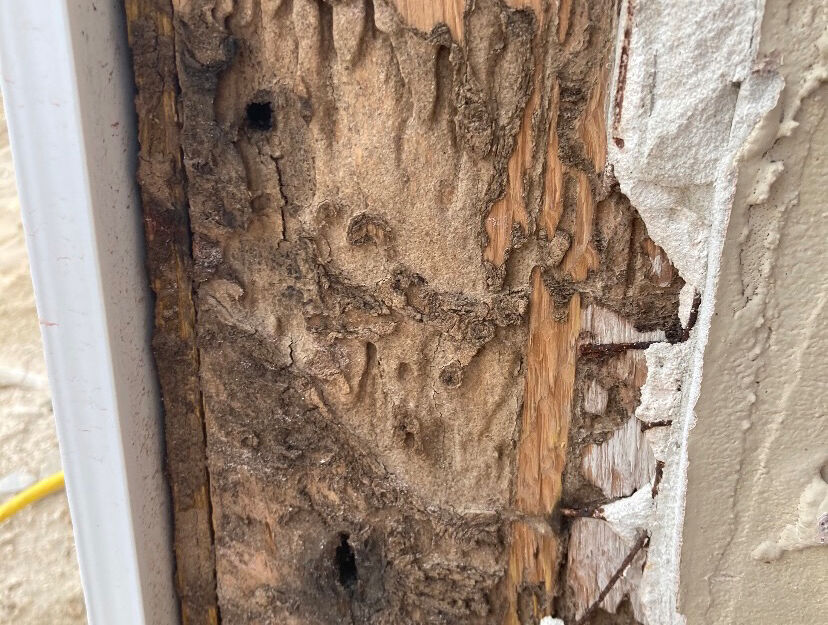Termites might be small, but their impact can be colossal, often leaving homeowners in a state of panic and disbelief. Among the myriad of species that scuttle about, three stand out as the ultimate nightmares: the formidable Eastern subterranean termite, the crafty drywood termite, and the relentless Formosan termite.
Each of these pests boasts unique characteristics, behaviors, and damage potential, igniting a frantic quest for understanding. As we delve deeper into the habits of these wood-devouring intruders, it becomes clear that not all termites are created equal.
Brace yourself as we unravel the details of these notorious critters, and perhaps by the end, you’ll be left wondering which one really deserves a spot on your list of household horrors.
Introduction to Termite Species: Understanding the Threat
.2405220737270.jpg)
Termites, often relegated to the shadows of the insect world, represent a formidable threat to both structures and ecosystems. These social insects, with their complex colonies and relentless appetites for cellulose, can turn the most unsuspecting wooden beams into mere husks in a matter of months.
While some species are relatively innocuous, others possess the potential to wreak havoc on homes, industries, and even agriculture. Understanding the specific traits and destructive capabilities of various termite species is essential for homeowners, pest control professionals, and anyone interested in safeguarding their environment.
From the notorious subterranean termite, which harbors a penchant for silent devastation, to the wood-destroying drywood termite, each type poses unique risks that demand attention. In a world where properties represent not just investments but havens, recognizing and combating these unseen adversaries is not just wise; it’s imperative.
Key Characteristics and Behaviors of the Most Destructive Termite Species

When delving into the world of termites, certain species emerge as notorious villains in the realm of structural devastation. Among them, the Eastern subterranean termite stands out, wreaking havoc with their insatiable appetite for cellulose, which can lead to catastrophic damage in homes and buildings.
With their colonial structure, these termites are social creatures, banding together in colonies that can number into the millions, amplifying their destructive power. They create elaborate tunnel networks underground, stealthily seeking out wooden structures, and can remain undetected for years while silently munching away at the very framework that supports your house.
In stark contrast, Formosan termites, often dubbed the super termite, invade with sheer ferocity and can consume wood at an alarming pace, resulting in significant structural damage in just months. Their aggressive behavior and ability to thrive in various environments make them a terrifying foe for homeowners.
With swarming tactics that occur during warm, humid nights, these termites can quickly overwhelm local ecosystems, leaving a trail of ruined woodwork and financial despair in their wake. Understanding the key characteristics and behaviors of these destructive species is essential for developing effective prevention and treatment strategies, turning knowledge into your greatest ally against these dreaded pests.
Comparing Damage Potential: Which Termite Species Causes the Most Harm?

When evaluating the damage potential of various termite species, it quickly becomes apparent that not all termites are created equal; some are more notorious for wreaking havoc than others. Among the most destructive are the Eastern Subterranean termites, whose colonies can number in the millions and gnaw through wood at an astonishing rate.
In contrast, Formosan termites, often labeled the “super termites,” can devastate homes in mere months, thanks to their aggressive behavior and vast nesting capabilities. Meanwhile, drywood termites, though slower in their destructive tendencies, can still compromise the structural integrity of wooden structures over time.
The differences in their feeding habits and colony sizes paint a stark picture: while some species quietly erode wood from the inside out, others launch full-scale assaults. Homeowners should be acutely aware of these differences, as the presence of one species over another can spell the difference between minor repairs and significant restoration costs.
Conclusion
In conclusion, understanding the various termite species is crucial for homeowners seeking to protect their properties from these destructive pests. Each species, from the subterranean to the drywood termite, presents unique challenges and concerns, making it essential to identify which type may be lurking in your home.
With the potential for devastating damage, knowing how to recognize the signs of an infestation can prompt timely and effective actions—such as termite fumigation—ensuring that you safeguard your living space. By staying informed and proactive, you can mitigate the risks and keep your home free from these relentless invaders, turning your worst nightmare into a manageable situation.


